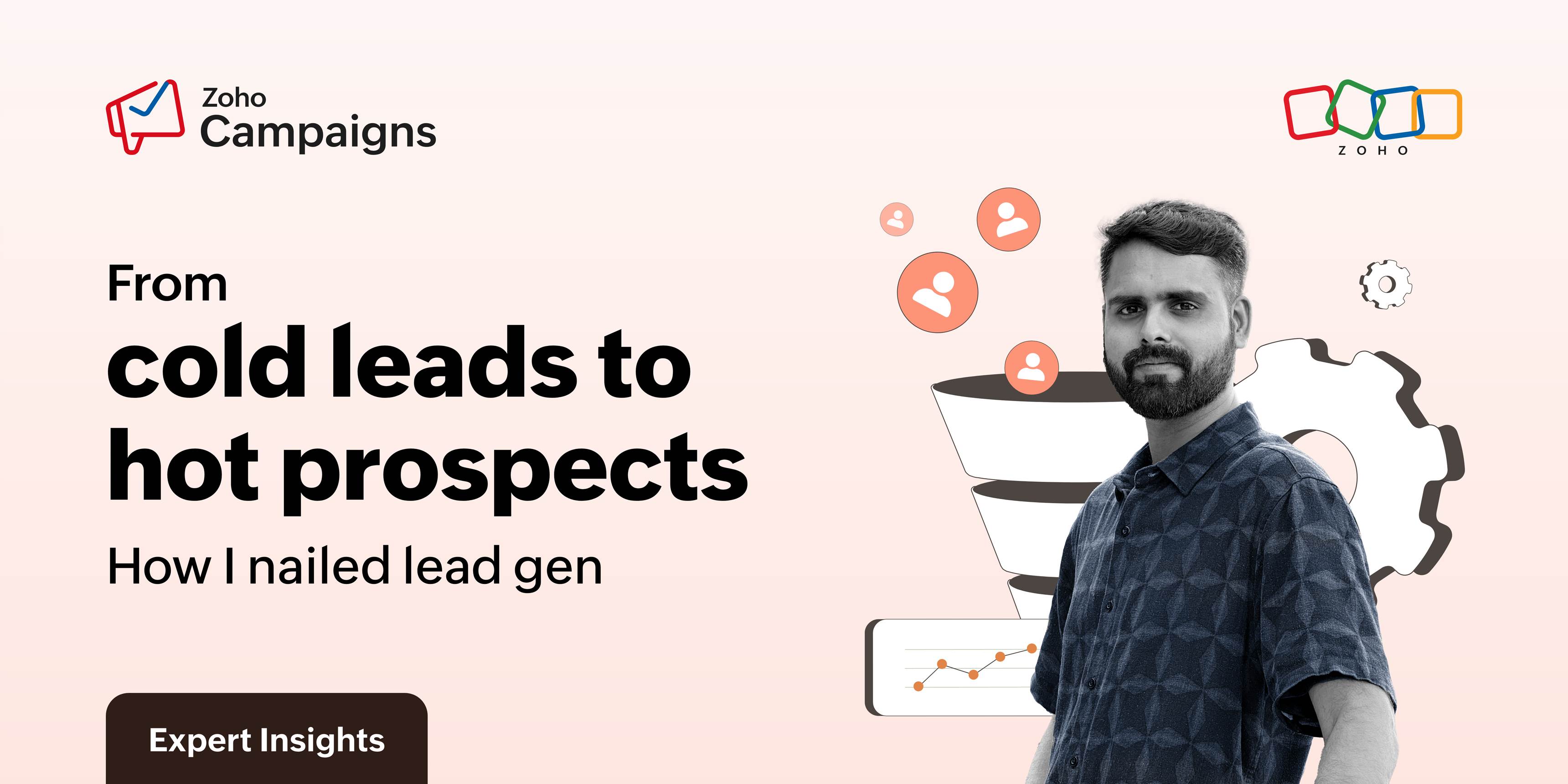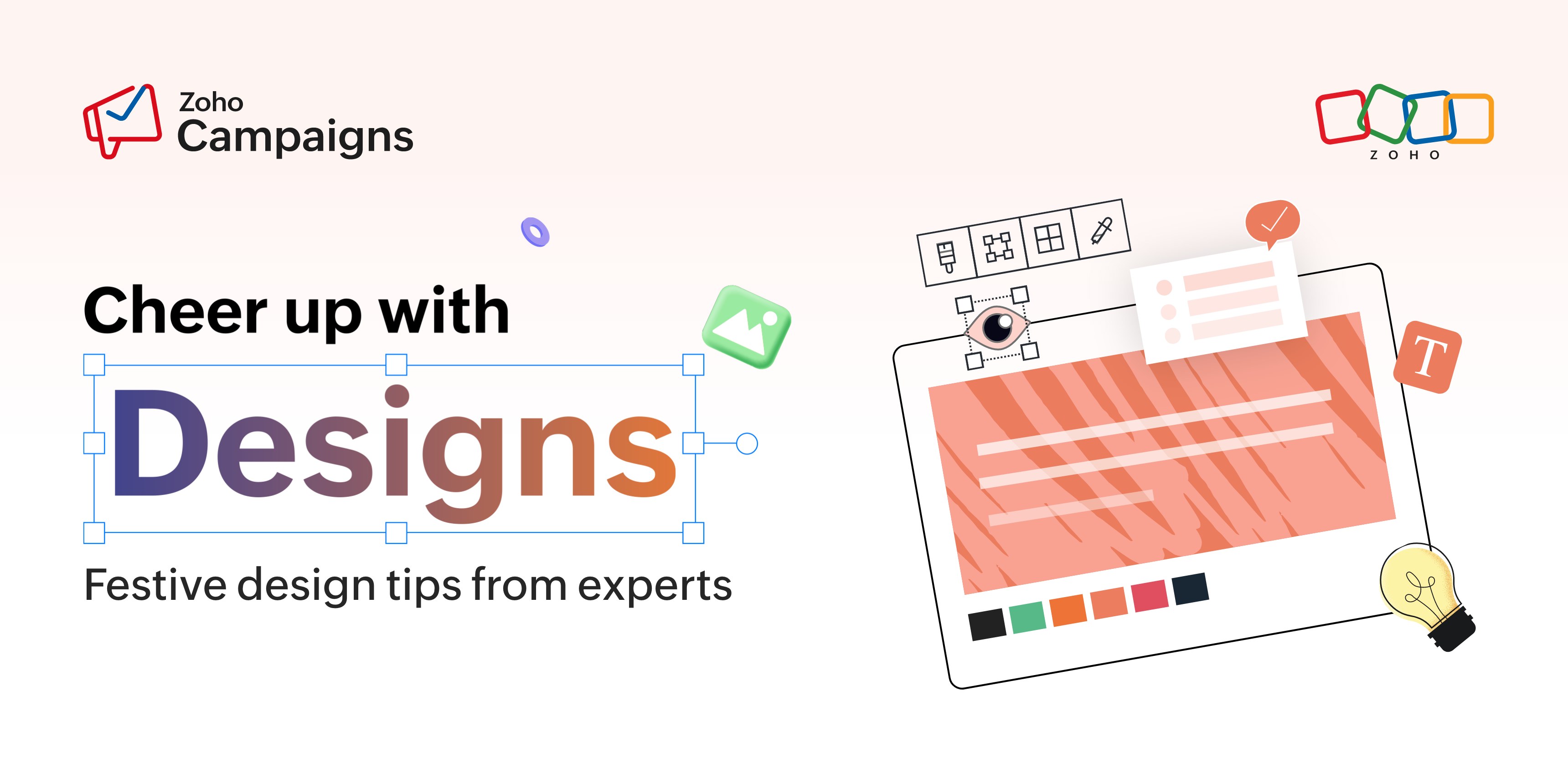- HOME
- Expert Insights
- My email marketing lead generation journey: The wins, the losses, and the lessons
My email marketing lead generation journey: The wins, the losses, and the lessons
- Last Updated : March 27, 2025
- 116 Views
- 7 Min Read

Email marketing is one of the most powerful tools for generating leads and driving revenue ($42 in revenue for every $1 spent). But not all leads are equally valuable for your business, and not every strategy delivers results. It took me a while to realize this simple fact.
When I set out initially, my focus was always on driving more leads because the logic seemed water tight: More leads equals more revenue. However, focusing on the volume at the expense of intent and quality can be pointless. I learned this the hard way.
Over the years, I’ve worked on various email campaigns—some that drove conversions and others that turned out to be a complete waste of time and resources. Through these experiences, I’ve learned what works, what doesn’t, and how to avoid common pitfalls.
In this article, I’ll share some of those insights—why a bloated email list can do more harm than good, how to identify high-intent leads, and the importance of lead segmentation and qualification, among other things. If you’re investing in email marketing, these lessons might help you refine your approach and focus on what truly drives results.
My failed experiments
Quantity over quality: Recipe for failure
I committed the cardinal sin. I purchased email lists because I prioritized quantity over quality.
Every marketing guide said, “The money is in the list,” so I did everything I could to collect more emails. I purchased email lists from third-party vendors, used bots to extract publicly available email addresses, and contacted data brokers for sales prospecting.
The result? A bloated list of unqualified leads who never converted.
I learned that buying an email list can result in low open rates, high unsubscribe rates, and potential spam complaints, ultimately damaging one's sender reputation
Inactive leads: Dead weight in your email list
For a while, I let low-intent leads stay on my email list.I was attached to them because I put them together with great efforts. I thought, “Every email address is valuable. I can’t just delete subscribers!”
So I kept emailing people who never opened a single message. I even ran re-engagement campaigns, trying to win them back with discounts and special offers.
Guess what happened? Nothing.
My open rates dropped. My emails started landing in spam folders.
Lesson learned: An email list is not a collection of email addresses—it’s a community of people who are interested in your brand.
Lead qualification: The golden edict I missed
Not every lead is at the same stage of their buying journey, and most importantly, not every lead is equally valuable to your business.
Some leads are:
Just browsing
Curious but not ready to buy
Uninterested, but signed up because of a random offer
What I failed to do was to define who my high-intent leads were.
I wasted time and money nurturing the wrong people instead of focusing on the ones who actually wanted what I was offering.
The new rules of email marketing lead generation
So, if the old way is broken, what actually works?
Stop chasing “more” leads—Chase better leads
At one point in my career, I was responsible for expanding the partnership network of my company, which specialized in ecommerce. As I set out, I believed the more outreach, the better. So, I took a spray-and-pray approach—mass emailing agencies, freelancers, and tech firms, hoping they’d be interested in partnering with us.
The result? Low response rates, disinterested leads, and wasted time on unqualified prospects.
Realizing we needed quality over quantity, I pivoted to a high-intent lead strategy.
First, I identified our ideal partners—agencies specializing in design, development, and digital marketing who could offer their services to our customers. Instead of blasting generic partnership invites, I created a targeted content funnel.
I started with a lead magnet—an in-depth guide which discussed how the agencies can benefit from the partnership. I added those who downloaded the lead magnet to an automated email workflow with two nurturing emails.
In the first email, I laid out the partnership roadmap and specified exclusive perks: priority support, co-marketing opportunities, and revenue-sharing models with a CTA for a one-on-one consultation.
A second email with a product demo invitation was automatically triggered to those who joined the one-on-one consultation.
Those who completed the product training were onboarded. This was a more focused approach that saved a lot of time and manpower.
Segment and qualify leads
I briefly freelanced for a startup that tried to break into the NIOS Open Schooling market. In order to drive new leads for their open schooling program, I planned a webinar. But since the webinar was promoted across multiple platforms, I realized that some existing clients (parents of students) had also registered.
Since I had planned giveaways for new leads, I segmented the webinar registrants into clients and prospects, which helped me identify my target group.
Even among new leads that I generated via the webinar, not everyone was an ideal prospect. Open schooling, being a premium and alternative education choice, typically appealed to:
High-net-worth parents who could afford a flexible, private schooling model.
Parents of aspiring athletes or performers looking for non-traditional schooling to balance education and training.
Instead of treating all leads the same, I qualified them based on:
Financial readiness – Could they afford premium open schooling tuition?
Career goals – Were they looking at a sport as a career for their child?
High-intent leads (parents who ticked my criteria) received a one-on-one consultation with a counselor. The fence-sitters were added to a newsletter on the benefits of the program, addressing common concerns about open schooling.
With segmentation and qualification, I was able to cut through the clutter and identify what mattered to our business. The company ensured the counselors focused on high-intent parents while continuing to nurture the rest. This personalized approach not only increased enrollments but also ensured that the marketing efforts were efficient and cost-effective.
Clean your list and protect your email reputation
My client would participate and sponsor many sporting events across different cities. Their goal was to create brand visibility in the NIOS space. When I attended some of these events, I purchased email lists from the academy for future engagement.
I ran multiple campaigns after that, and a common pattern emerged—poor open rates, low engagement, and an increasing number of bounced emails.
This wasn’t just a case of wasted outreach efforts. The low engagement and high bounce rates were literally hurting our email sender reputation.
To turn things around, I did a couple of things.
First, I stopped buying lists and added a dedicated sign-up form on the client’s website, making it easy for genuinely interested parents to opt in. To drive traffic to this form, I added a QR code to event banners, merchandise, and digital promotions, encouraging attendees to scan and sign up directly. This ensured that I was collecting email addresses from parents who actually wanted to hear from us.
Second, I took a deep dive into our existing lists, identifying inactive contacts and removing invalid email addresses.
With a cleaner, more engaged list, my email campaigns started performing significantly better—higher open rates, improved click-throughs, and, most importantly, a real audience that wanted to interact with the brand.
Use behavioral triggers, not just blast emails
Using behavioral triggers enables you to deliver the right message to the right audience at the right time. In fact, emails that are triggered based on user behavior are likely to double the open rate of campaigns and increase the unique click rate by four times.
I have tasted success in setting up automated emails based on behavioral triggers. Let me refer to my earlier example. Instead of relying on mass email outreach, I built a lead generation funnel driven by behavioral triggers to ensure we identified and on-boarded high-intent partners.
Trigger 1: Lead magnet download - Automated nurture sequence
I set up an automation that triggered emails only for those who downloaded the lead magnet—an in-depth guide on how agencies could benefit from our partnership. This ensured we weren’t chasing cold, unqualified leads but rather those who had already shown some level of interest.Trigger 2: Email engagement - Contextual follow-ups
Instead of sending generic follow-ups to everyone, I set up email automation based on recipient actions:If someone opened the first email but didn’t click the CTA, they received a reminder email to book their one-on-one consultation.
Those who clicked CTA for consultation were sent the second email in the sequence.
If my audience ignored the email entirely, they were moved to a separate segment for a re-engagement campaign.
Trigger 3: Consultation booking - Automated demo invitation
Once a lead booked a one-on-one consultation, an automated sequence triggered a personalized product demo invite, ensuring they were educated on our platform before making a commitment.
Trigger 4: Demo attendance - Fast-track onboarding
Those who engaged with the email with the link to the product demo invitation were moved into the onboarding process, accelerating their journey to becoming a partner.
Setting up an automated lead nurturing funnel based on behavioral triggers not only helped save time but also resulted in significantly expanding our customer base and revenue.
Final thoughts
Lead generation is a daunting task, and there's no one-size-fits-all formula that can be applied to every business or industry. I don't claim to have unraveled the secret code to email marketing lead generation, but my experience taught me what to avoid, and buying email lists is among the foremost things.
On the other hand, qualifying leads, using behavioral triggers, and maintaining a clean email list can make all the difference to your business, as it did for me. Instead of chasing vanity metrics like list size, focusing on intent can drive better leads and more revenue. In a nutshell, more leads don't guarantee more revenue; better leads do.


